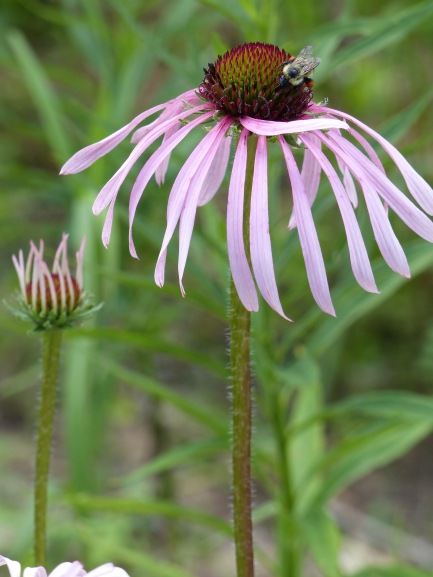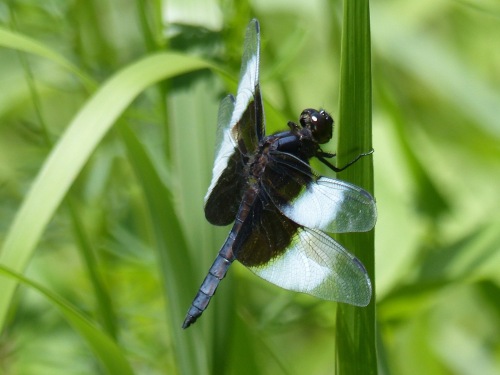“We abuse land because we regard it as a commodity belonging to us. When we see land as a community to which we belong, we may begin to use it with love and respect.” –Aldo Leopold
***
Some people swear they need to see Bob Dylan in concert before they die. Others vow they’ll climb Mt. Everest. Or aspire to drive the length of historic Route 66.

But for many of the almost 200 people who gathered for The Aldo Leopold Foundation‘s “Building a Land Ethic” Conference in Baraboo, Wisconsin, this past week, their goal was this:
To see “The Shack.”

No, not the “Love shack, baby,” (with apologies to the B-52s). Although this shack is “set way back in the middle of the field” as the song says.
“The Shack” is a remodeled chicken coop and iconic Wisconsin weekend retreat that provided inspiration for conservationist Aldo Leopold’s book, A Sand County Almanac, published in 1949.

In his series of essays, Leopold eloquently writes about the tension between humans and nature. He was inspired by the prairies, marshes and woodlands that surrounded The Shack, as well as other places he had worked at or traveled to. Leopold’s words are an eloquent plea to change the way we think about–and care for—our world.
In the 1940s, not every publisher thought people were ready to hear this University of Wisconsin professor’s conservation ideas. Look at this letter Leopold received from a publisher considering his manuscript:

Thank goodness Leopold persisted in keeping his “monotonous” ecological theories in the book! Although he died before A Sand County Almanac went to print—with a different publisher—he had the joy of knowing his conservation ethics would be shared with a larger audience.

What Leopold couldn’t know was that his ideas would become the foundation upon which we build many of our conservation ethics today.

For those who care for prairies, woodlands or other natural areas, it is difficult to choose a favorite Leopold quote. One of his most famous is this: “A thing is right when it tends to preserve the integrity, stability, and beauty of the biotic community. It is wrong when it tends otherwise.”

A favorite of mine: “We shall never achieve harmony with the land, anymore than we shall achieve absolute justice or liberty for people. In these higher aspirations the important thing is not to achieve, but to strive.”

Or this quote, which is frequently circulated in prairie restoration circles: “What a thousand acres of Silphiums looked like when they tickled the bellies of the buffalo is a question never again to be answered, and perhaps not even asked.” A bit depressing, isn’t it?
The Silphiums refer to four prairie plants:
Compass plant, which blooms right around the summer solstice, sending periscopes of yellow flowers across the sea of grasses.

Cup plant, whose opposite leaves join around the stem to “cup” water after a rain. The perfect goldfinch drinking fountain.

Rosin weed and prairie dock complete the quartet.
I think Leopold would be happy to know that today, almost 70 years later, many of us are restoring tallgrass prairie.

We won’t reclaim all that was lost, but perhaps we are following his direction: “To keep every cog and wheel is the first rule of intelligent tinkering.”

The Silphiums are just four of those many critical “cogs” and “wheels” we plant, tend, and celebrate. Today, at larger prairie restorations in the Midwest, it’s possible to see a thousand acres of prairie—with Silphiums–“tickling the bellies of bison” again.

Leopold’s love for prairies, woodlands, marshes, and the natural world continues to influence and inspire those of us who volunteer and work in restoration today.

Visiting “The Shack” reminds us of the power of words. They can change the world.

Which of Leopold’s words resonates with you?
****
The opening quote is from the foreword to A Sand County Almanac (1949) by Aldo Leopold (1887–1948). His groundbreaking ideas continue to influence the way we care for the natural world today. If you haven’t read A Sand County Almanac (And Sketches Here and There), consider beginning with one of these essays: “Thinking Like a Mountain,” “A Marshland Elegy,” or “Good Oak.” To discover more about Leopold and his conservation ethics, you might also read Curt Meine’s excellent book, Aldo Leopold: His Life and Work.
All photos copyright Cindy Crosby (top to bottom): monarch (Danaus plexippus) on butterfly weed (Asclepias tuberosa), International Crane Foundation prairie, Baraboo, WI; outside “The Shack” with daylilies (Hemerocallis fulva), Aldo Leopold Shack and Farm, Baraboo, WI; outside Aldo Leopold’s Shack, Aldo Leopold Shack and Farm, Baraboo, WI; inside looking out a window of “The Shack”, Aldo Leopold Shack and Farm, Baraboo, WI; yellow hoary puccoon (Lithospermum canescens), Aldo Leopold Shack and Farm prairie, Baraboo, WI; letter, Leopold Center, Baraboo, WI: black-eyed Susan (Rudbeckia hirta), Aldo Leopold Shack and Farm prairie, Baraboo, WI: foundation with prairie planting, Leopold Center, Baraboo, WI; leadplant (Amorpha canescens), International Crane Foundation prairie, Baraboo, WI; spiderwort (Tradescantia ohiensis), Leopold Center, Baraboo, WI: compass plant (Silphium lacinatum), The International Crane Foundation prairie, Baraboo, WI; cup plant (Silphium perfoliatum), Aldo Leopold Shack and Farm prairie, Baraboo, WI; pale purple coneflower (Echinacea pallida), Leopold Center, Baraboo, WI; widow skimmer dragonfly (Libellula luctuosa), International Crane Foundation prairie, Baraboo, WI; bison (Bison bison) with their ten offspring, Nachusa Grasslands, The Nature Conservancy, Franklin Grove, IL; goat’s rue–also called “the devil’s shoestrings” (Tephrosia virginiana) Leopold Center, Baraboo, Wisconsin; hairy beardtongue (Penstemen hirsutus), International Crane Foundation prairie, Baraboo, WI.



Perfect.
LikeLiked by 1 person
Thank you, Katherine!
LikeLike
I’m a big fan of Aldo Leopold’s. Thank you for sharing this post about him and his work.
LikeLiked by 1 person
Thanks for reading and commenting, Melissa! Me too.
LikeLiked by 1 person
I am a huge fan of Leopold’s work and words. i got to see his “shack” a couple years ago- good to see what i’ve read about o many times….
LikeLiked by 1 person
I’ve always wanted to see it too! Glad to finally get there. Thanks for reading and commenting, Cheryl.
LikeLike
I’ve never been the same since the first time I read “Only the mountain has lived long enough to listen objectively to the howl of a wolf.”
LikeLiked by 1 person
His words are life-changing! Thank you for reading — and for taking time to share, John. Much appreciated.
LikeLike
inspiring Man, and inspiring Post. thank you Cindy!
LikeLiked by 1 person
I learn something new each time I read the book, Mike! Thanks for reading the post, and thank you for commenting.
LikeLiked by 1 person
So glad you are keeping this blog going. It is winsome and illuminating!!
LikeLiked by 1 person
Thank you! That’s lovely.
LikeLike
Thank you, Cindy, for another beautiful post. I had been wanting to make it to the shack. 🙂 Very interesting, that letter of rejection. I do not have a quote, but it was Leopold’s description of birds that stuck with me, the detail and the understanding of the flocks with which he described them, was unlike anything I ever read. I recently noticed that Prescott National forest here in Arizona – 18,000 acres of which we just unfortunately lost to fire in the last 3 days 😦 – has a document posted, it is Aldo Leopold’s review of the Prescott forest year 1920. Leopold spent 15 years int he Southwest and is well loved here.
LikeLiked by 1 person
So good to have that reminder of Aldo Leopold’s sojourns in the SW — we recently traveled through the Gila National Forest/Aldo Leopold Wilderness area. Fire! A destructive and rejuvenating force… hope some good comes from it….What beautiful country, and so remote…. thank you for reading, and for commenting Bee.
LikeLiked by 1 person